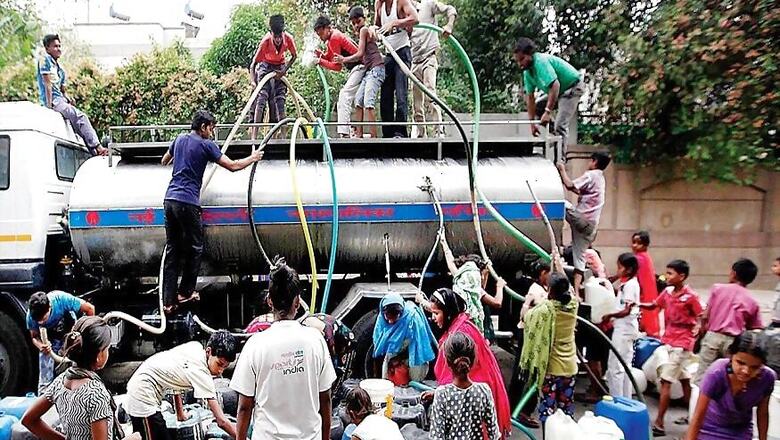
views
New Delhi: The Delhi Development Authority's LIG and Janta flats in Badarpur are roughly 500 metres apart. In one, residents wake up at the crack of dawn and have less than 30 minutes to fill enough water for the entire day, while in the other, people enjoy the leisure of not only longer sleeping hours but almost three times as much time for the same purpose.
Badarpur with its skewed water distribution system is a sample case for almost the entire city. According to data sourced from the Delhi Jal Board (DJB), DDA’s LIG flats in Badarpur receive water starting at 5:15 am and the supply lasts till 5:45 am, while merely 500m away, the same source of water starts at 5:50 am and lasts for 1 hour 25 minutes.
Move a little further and you’ll find that Santosh Singh, who lives in a gated residential society four kilometres away, has none of these issues to worry about. A resident of the Vishwakarma Colony, he gets water all day.
To understand the inequity in water distribution in Delhi, consider this: In seven colonies, of the 1,317 that DJB delivers water to through pipes and tube-wells, families have less than 30 minutes to fill enough for their needs. In 10 colonies, families have less than 40 minutes. In almost 65 per cent of the colonies, water lasts a couple of hours.
However, 5 per cent of Delhi, mostly concentrated around the central and north-western parts, gets more water than the rest of the city combined. All of this, DJB states, is subject to availability of water and electricity.
An emailed questionnaire to DJB remained unanswered at the time of filing this report. The story will be updated as and when the board responds.
With Assembly elections in the capital city less than a month away, quality and quantity of water may become a major concern. Moreover, according to reports, the Arvind Kejriwal-led Aam Aadmi Party is set to announce 24×7 water supply in the national capital as a key promise in its manifesto for the February 8 polls.
Kejriwal had promised round-the-clock water supply while inaugurating an underground reservoir in south Delhi’s Kishangarh in December.
News18 visited twenty five colonies in Delhi and found that fulfilling this promise may be a huge challenge. The duration of water supply mentioned on paper is far from reality along with the fact that inequity in water distribution has moulded the way people lead their daily lives.
Water Dictates the Day
Amit Sharma, 38, a father of two, lives in the DDA flats in Badarpur. On days when there is no water, his children either miss school or go with extra money as a substitute to home-made lunch. He, on the other hand, needs to inform his boss about delays in reaching office often.
The area, on paper, gets water for 30 minutes daily starting at 5:15 am. However, several residents complain that there is usable water only for 15-20 minutes.
"The duration is never fixed. Sometimes there is water for 20 minutes and on others it hardly lasts for 10. The initial flow is also mostly dirty and needs to be thrown away," says Sharma.
As per Census 2011, there are roughly 33.41 lakh households in Delhi out of which 27.16 lakh households are provided water through a piped water supply system, covering 81.30 per cent of households. However, out of this 81.30 per cent, 6.10 per cent households have access to piped water from an untreated source.
This disparity in water supply has, over the years, seeped into how people in the area live. "We wake up at 5 am everyday only for the purpose of stocking water. My wife and I keep all the storage items ready. My kids also help," says Sharma.
The scarcity of water is visible in the number of buckets and barrels the family owns. The washroom and kitchen is a snake-like pathway treading between large storage tanks waiting to be filled.
Across the road, roughly 500m away, the scenario is far more relaxed, though not ideal.
DDA Janta Flats in Badarpur get water for an hour and a half. The relatively longer duration is, again, visible in the way people here go about their day.
"We generally have water leftover from the previous day, so the urgency for stocking is not there. Though they promise an hour and a half, it is generally less," says Krishna Gupta, a 43-year-old banker.
The contrast can also be witnessed in the way water is used. The large storage barrels are replaced with normal buckets and earthen pots. Sweeping the house on a daily basis is not a problem and work-life is not dependent on the availability of water. The houses in general have more plants.
"However, quality of water is a major concern. If stored for more than a day, the water turns yellowish. Also, we cannot keep stagnant water for long due to the risk of dengue-causing mosquitoes," says Gupta.
On days when there is no water there are long queues of men and women with empty buckets waiting for water tankers.
DJB states that in areas where there is no piped water supply, it supplies potable water through around 800 department and hired water tankers from 25 emergency centres in different zones in Delhi.
The Aam Aadmi Party (AAP) government aims to get rid of water tankers by March, 2020.
Water Beyond Money
Meanwhile, what is occasional for DDA flat-dwellers is a daily exercise for residents of Gautampuri, even after being promised water by the government.
The Delhi government in an official statement on June 19 claimed that chief minister Arvind Kejriwal had “fulfilled his promise” by “supplying Ganga water” to households in “Badarpur Assembly constituency.”
Roughly one kilometre away from the DDA flats, the area still waits for piped water.
Gautampuri happens to be an unauthorised colony. According to a study by National Capital Region Planning Board, close to 65 per cent of the population in unauthorised colonies of South-West Delhi belong to Scheduled Caste and Other Backward Castes.
The study also found that most inhabitants are migrants from Bihar and Uttar Pradesh who work as daily-wage labourers.
For residents of the area, water comes only from borewell and tankers, both generally not suitable for drinking and cooking purposes.
"We need to make three trips daily to the borewell for our daily needs. The water that comes is also not potable. Water from tankers turns yellow after some time. It is only for fifteen minutes that drinking water is available," says Suman, a resident of the colony since the last seven years. Her family migrated to Delhi from Hathras, Uttar Pradesh, in search of better employment.
In order to make water reach their households, people living in the area have drilled holes into the main water pipeline laid down by DJB, however there is no water as yet.
A January 2016 study by Water Integrity Network, 'Inequalities in Water Service Delivery in Delhi', notes that "Caste, religion, and political dynamics influence water management significantly and deepen critical integrity issues of inequality and discrimination. These political and social boundaries are associated with a high rate of migration of diverse ethnic groups."
The argument of water distribution being biased in urban areas is not new. It was first pointed out in 1988 by National Commission on Urbanisation headed by Charles Correa, credited for creating modern architecture in post-independence India.
The report noted that almost 72 per cent of the urban population did not have access to safe water and sanitation in 1985. According to report by TERI in 2018, 54 per cent of the urban population has access to safe sanitation and 16 per cent still waits for access to safe water.











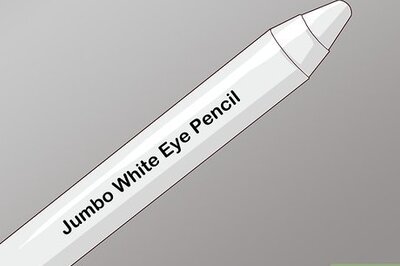

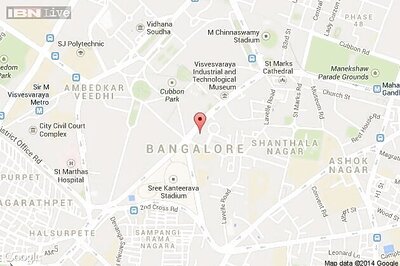
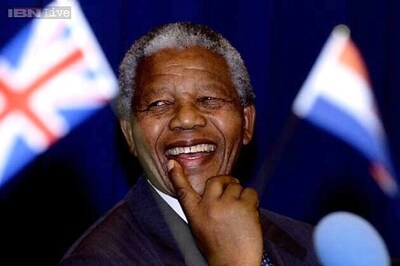
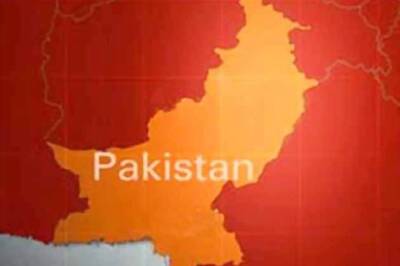
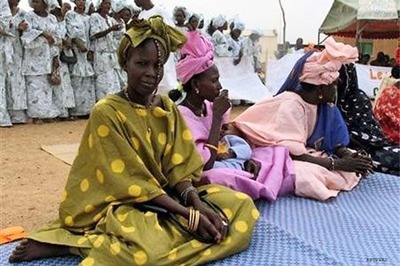

Comments
0 comment